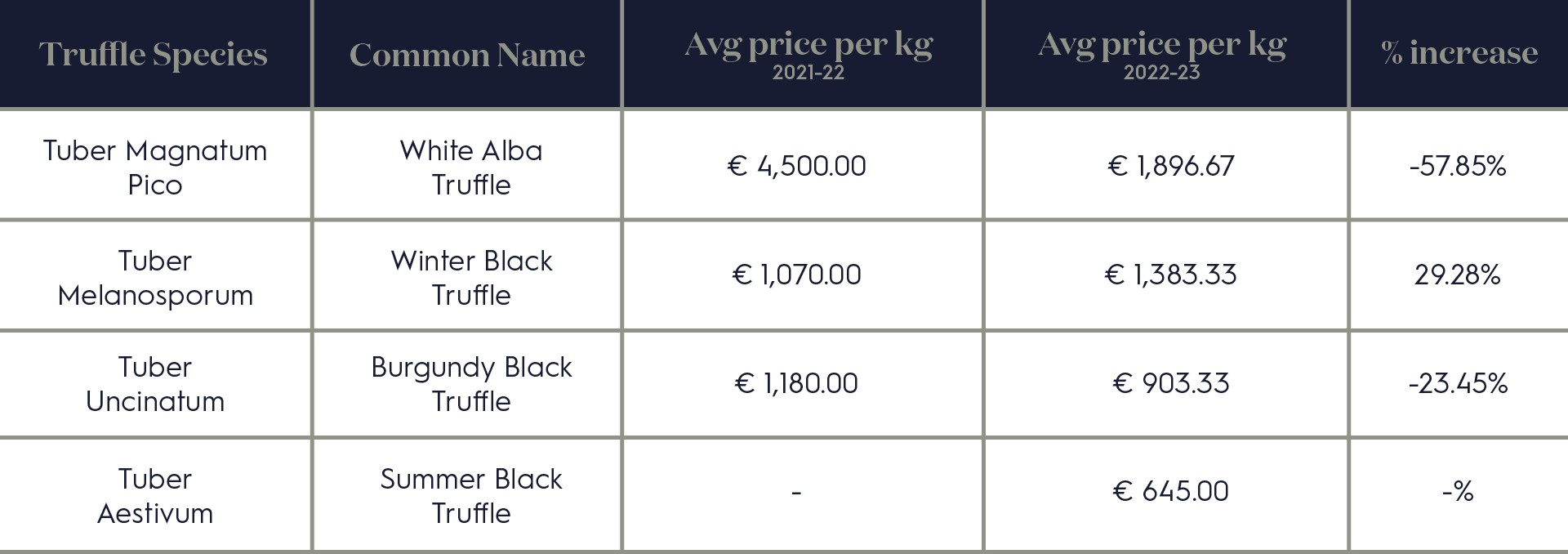Truffles are a culinary delicacy, prized for their unique aroma and earthy flavor. But their high price tag often leaves people wondering: why are truffles so expensive? The answer lies in a combination of factors, from their challenging cultivation to the intricate processes involved in bringing them to the table.
 TrufflesTable_2023
TrufflesTable_2023
The Scarcity and Difficulty of Cultivating Truffles
One of the primary reasons for the high cost of truffles is their scarcity. Unlike mushrooms that readily sprout in various environments, truffles require very specific conditions to thrive. They grow underground, typically near the roots of oak trees, in specific climates and soil compositions.
Establishing a truffle orchard is a long and arduous process. It can take years, sometimes up to a decade, before the first harvest. Even then, there’s no guarantee of success. The unpredictable nature of truffle cultivation contributes significantly to their limited availability and consequently, their high market value.
Truffle orchard with oak trees.
Furthermore, harvesting truffles is labor-intensive. Traditionally, trained pigs or dogs are used to sniff out the hidden delicacies. Each truffle must be carefully dug up by hand, further adding to the cost.
The Perishable Nature of Truffles and Global Demand
Truffles have a notoriously short shelf life, further increasing their price. Once harvested, they begin to lose their moisture and aroma rapidly. This necessitates swift transportation to consumers worldwide, often via air freight, adding significant expense to the already costly product.
The increasing global demand for truffles further exacerbates the price issue. As more people develop a taste for this luxurious ingredient, the limited supply struggles to keep up, driving prices even higher. This demand is reflected in the growing truffle market, projected to reach billions of dollars in the coming years.
Google Trends data illustrating growing interest in truffles.
The Truffle Market: A Growing Industry
The truffle market is a thriving industry, fueled by the increasing demand for this rare delicacy. This demand extends beyond fresh truffles to include truffle-infused products like oils, salts, and butter, making the experience more accessible to a wider range of consumers.
A selection of truffle-infused products: oil, salt, and honey.
Are Truffles Fungi? Climate Change Threats
Truffles are indeed fungi, specifically underground mushrooms belonging to the Tuberaceae family. Their unique growth cycle and dependence on specific environmental conditions make them particularly vulnerable to climate change. Deforestation and shifting weather patterns pose a significant threat to wild truffle populations, further contributing to their scarcity and high cost.
Truffle Prices in 2024 and Market Factors
Truffle prices remain high in 2024, with variations depending on the type, size, and quality. White truffles, especially the Italian Tuber magnatum, are the most expensive. The size of the truffle significantly impacts its price, with larger truffles commanding premium prices due to their rarity. Factors like harvest quantity, demand, conservation status, size, and harvest season all contribute to the final price.
Different types of truffles showcase variation in size and appearance.
Understanding Truffle Types and Culinary Uses
There are various types of truffles, each with its own distinct characteristics and flavor profiles. Understanding these differences is crucial for appreciating their culinary value. EHL’s Senior Lecturer of Culinary Arts, Patrick Ogheard, offers insights into four main types: Tuber melanosporum (black winter truffle), Tuber magnatum (white truffle), Tuber aestivum (summer truffle), and Tuber uncinatum (Burgundy truffle). Each variety has a specific season, ideal culinary applications, and storage recommendations.
Affordable Truffle Experiences: Oils, Salts, and Butter
While fresh truffles can be prohibitively expensive, truffle-infused products offer a more affordable way to experience their unique flavors. Truffle oils, salts, and butter allow consumers to add a touch of luxury to their dishes without breaking the bank.
Conclusion: A Delicacy Worth the Price?
The high cost of truffles is a result of their unique biology, challenging cultivation, perishability, and growing global demand. While their price tag may seem extravagant, the complex flavors, aromas, and culinary experiences they offer make truffles a sought-after delicacy for many. Whether enjoyed fresh or through infused products, truffles continue to captivate food lovers around the world.